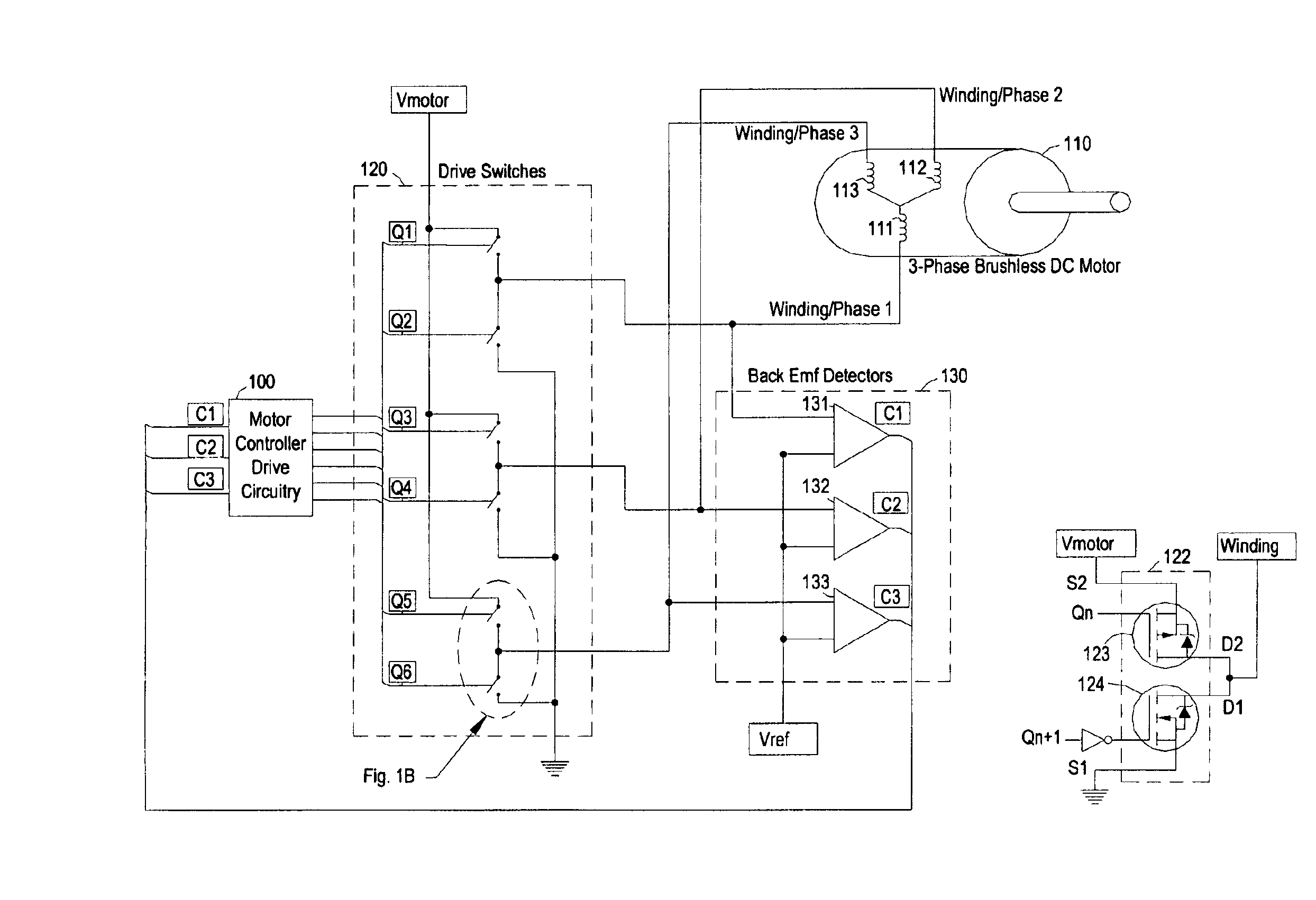Digital adaptive sensorless commutational drive controller for a brushless DC motor
a dc motor and sensorless technology, applied in the direction of motor/generator/converter stopper, electronic commutator, dynamo-electric converter control, etc., can solve the problem of adding additional poles, increasing the complexity of the motor, and increasing the amount of hardware and wiring that is needed to drive the motor successfully
- Summary
- Abstract
- Description
- Claims
- Application Information
AI Technical Summary
Benefits of technology
Problems solved by technology
Method used
Image
Examples
Embodiment Construction
[0042]The preferred embodiment described herein generally discloses a digital motor controller drive circuit configured to provide commutation signals to a brushless, sensorless DC motor. The motor controller preferably resides in a feedback loop that comprises drive switches, commonly implemented using MOSFET switches, a three-phase brushless DC motor, and Back Electromotive Force (BEMF) detectors. The motor controller drive circuitry preferably receives digital signals from the BEMF detectors that indicate whether the voltage on the various windings are above a threshold and compares these levels with a previously detected level to determine whether the winding voltages are as expected. By expected, it is intended that the two levels—a presently detected level and the immediately prior detected level—are the same. If the voltage levels are as expected, the signature analyzer waits for a zero crossing before transmitting a commutation pulse. However, when the levels are different, ...
PUM
 Login to View More
Login to View More Abstract
Description
Claims
Application Information
 Login to View More
Login to View More - R&D
- Intellectual Property
- Life Sciences
- Materials
- Tech Scout
- Unparalleled Data Quality
- Higher Quality Content
- 60% Fewer Hallucinations
Browse by: Latest US Patents, China's latest patents, Technical Efficacy Thesaurus, Application Domain, Technology Topic, Popular Technical Reports.
© 2025 PatSnap. All rights reserved.Legal|Privacy policy|Modern Slavery Act Transparency Statement|Sitemap|About US| Contact US: help@patsnap.com



